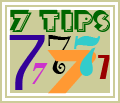 Before you start … get permission.
Before you start … get permission.
Email newsletters should be permission based, meaning that ONLY people who subscribe to your newsletter receive it. They have given you permission to engage in this form of communication with them.
Without permission, your newsletter is spam.
And nobody likes spam.
Once you’ve got permission, here are 7 tips for creating an effective email newsletter.
-
Avoid the Bcc field. Regular email clients—like Outlook, Lotus Notes, Gmail—are not set up to handle bulk newsletter distribution. If you are sending your email newsletter through your regular email client, you run the risk of being flagged as a spammer. Use a dedicated email service like Campaign Monitor or Constant Contact.
-
Pay attention to the “From”. Use your full name in the “from” email or sender address and a personal email address rather than a generic info@ address. You want to habituate people to recognizing your name. People are less likely to delete a message from a recognized sender.
-
Avoid spammy subject lines. Subject lines that include words commonly used by spammers, such as “Catch up”, “Let’s chat”, “Free” or “50% Discount”, get deleted right away.
-
Write subject lines that are specific and descriptive. A blank subject line means nothing. A descriptive subject line, such as “7 Tips for Winter-proofing Your Home”, tells people exactly what to expect in the newsletter and acts as an enticement to open the email right away.
-
Include a call to action. If you are selling something, ask for the sale. Include a “Buy Now” link. If you want to drive traffic to your site, include links and explain the benefit of visiting the site. Answer this question: What do you want people to do after reading your newsletter? Once you know the answer, make sure you include a call to action that attracts that result.
-
Be brief, be brilliant, be gone. Concise, memorable messages are preferred over long blocks of text. Make every word count. You want people to open your email right away, not save it for later, or delete it because the “saved” messages have piled up.
-
Test, test, test. If you are sending out HTML newsletters, make sure that your template works across common email clients. What looks good in your version of Outlook, might not look good in my email client. Mail Chimp has a good resource center and a great article on Stupid HTML Email Design Mistakes.
Have a tip to add? Share it in the comments.


